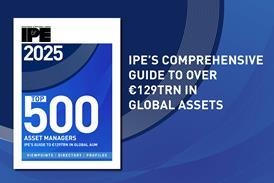Woody at work
Woody is the villain of the new book The US Pension Crisis – What We Need to Do Now to Save America’s Pensions, by Ronald Ryan. According to Ryan, Woody is the “pension pencil” or “the weapon of mass destruction in financial America”, used since the 1990s for accounting gimmicks that conceal the real financial situation of pension funds.
This content is only available to IPE Members
Already an IPE Member? Sign in here
Unlock your IPE Membership Package
For unlimited access to IPE’s industry-leading market intelligence, comprising news, data and long-form content on European pensions and institutional investment.
What type of organisation do you work for?
- Secure online payment
- Free European delivery
- Best value for price
IPE Membership
IPE has created a suite of products and services for Europe’s institutional investment and pensions community.
Premium content
Pension fund interviews,
country analysis and data
country analysis and data
Opinion and analysis
Asset classes
and strategies in depth
and strategies in depth







